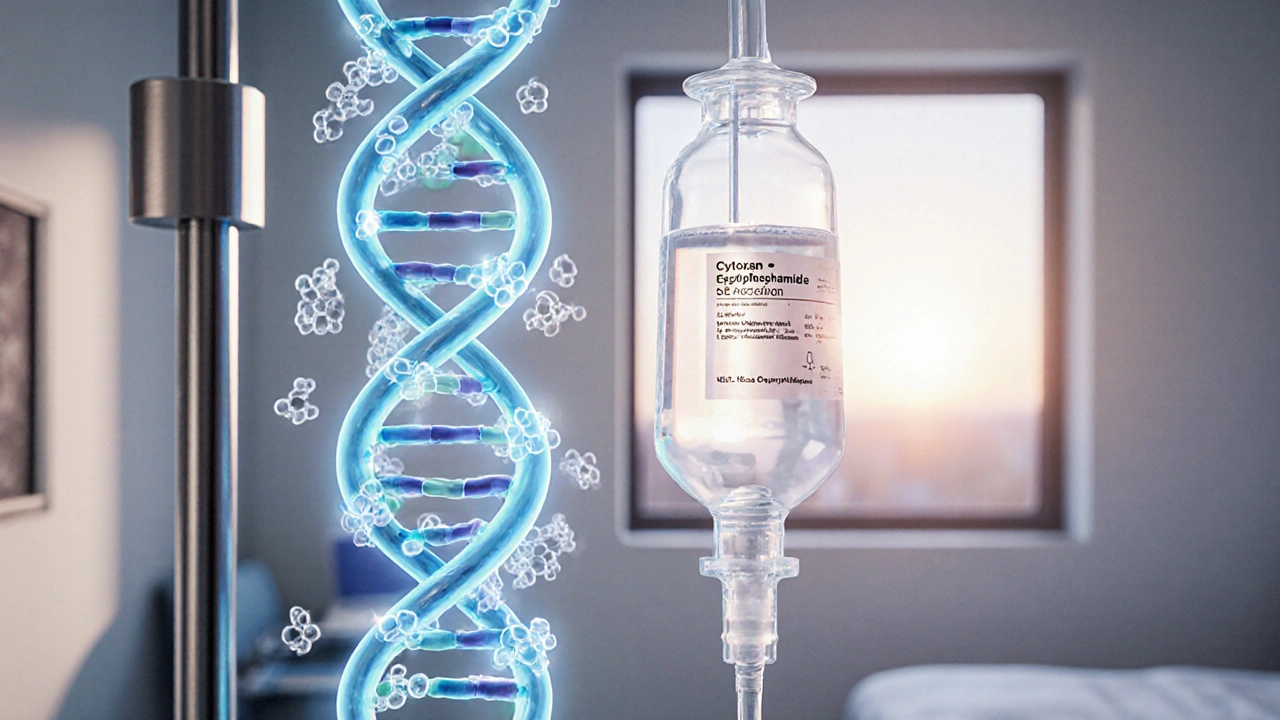
Cytoxan Side Effects: A Practical Guide
When dealing with Cytoxan, the brand name for cyclophosphamide, an alkylating chemotherapy agent used for many cancers and autoimmune diseases, patients often wonder what their body will go through. Also called cyclophosphamide, this drug works by interfering with DNA replication in fast‑growing cells. Because it targets rapidly dividing cells, it inevitably affects healthy tissue too, which is why side effects are a major part of the treatment conversation.
Cytoxan belongs to the broader category of Chemotherapy, treatments that use powerful chemicals to kill cancer cells or suppress the immune system. It also functions as an Immunosuppressant, a drug that reduces the activity of the immune system to prevent organ rejection or control autoimmune flare‑ups. These two roles create a web of effects: the drug can trigger nausea, hair loss, and low blood counts, while also raising the risk of infections and bladder irritation. Understanding how these entities interact helps you anticipate and manage the most common problems.
Key Side Effects and How to Tackle Them
First, the bone marrow suppression. Cytoxan often lowers white blood cells, red cells, and platelets, which can lead to anemia, bruising, or infections. Monitoring blood counts before each cycle and staying hydrated are essential. If you notice fever or unusual bleeding, call your doctor right away – prompt antibiotics or growth‑factor support can keep complications from spiraling.
Second, bladder toxicity, also known as hemorrhagic cystitis. The metabolite acrolein irritates the bladder lining, causing painful urination or blood in the urine. A proven prevention trick is aggressive hydration and adding mesna (a protective agent) to the regimen. Drinking plenty of water and emptying the bladder frequently reduces contact time of the irritant, which translates into fewer trips to the bathroom with discomfort.
Third, nausea and vomiting. Cyclophosphamide can trigger the chemoreceptor trigger zone in the brain, leading to queasy feelings. Modern anti‑emetic combos—like a 5‑HT3 antagonist plus dexamethasone—work well. Take them exactly as prescribed, and keep small, bland snacks handy to settle your stomach.
Fourth, fertility concerns. High doses of Cytoxan can affect sperm production in men and ovarian reserve in women. Discuss sperm banking or egg preservation before treatment starts; it’s a proactive step that many patients find reassuring.
Lastly, long‑term risks such as secondary cancers or cardiovascular issues can appear years later. Regular follow‑up appointments, heart health monitoring, and lifestyle choices like quitting smoking support long‑term well‑being.
All these side effects share a common thread: they stem from Cytoxan’s ability to damage rapidly dividing cells. By recognizing the pattern—bone marrow suppression, bladder irritation, gastrointestinal upset—you can partner with your care team to adjust doses, add protective meds, or tweak supportive care measures.
Below you’ll find a collection of articles that break down each of these topics in depth. From detailed hydration protocols to fertility preservation tips, the posts give you actionable steps that fit right into your treatment plan. Let’s explore the full range of information to help you stay ahead of the side effects and keep your health on track.

